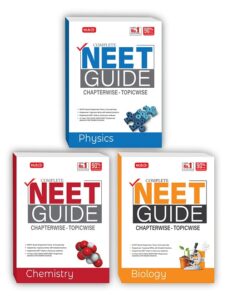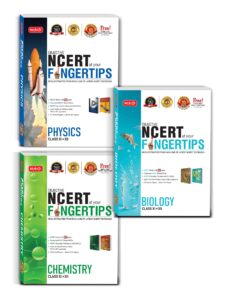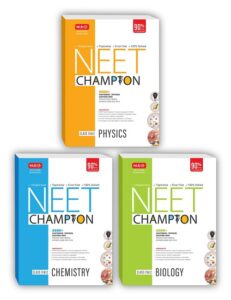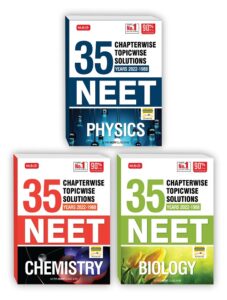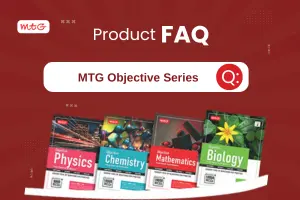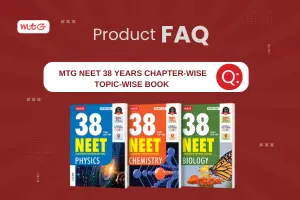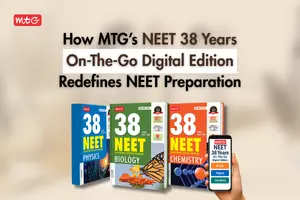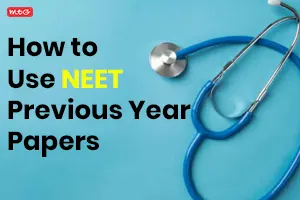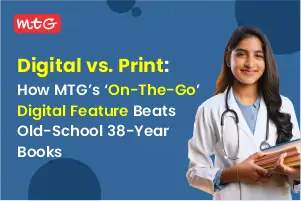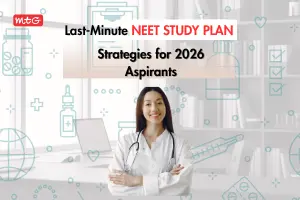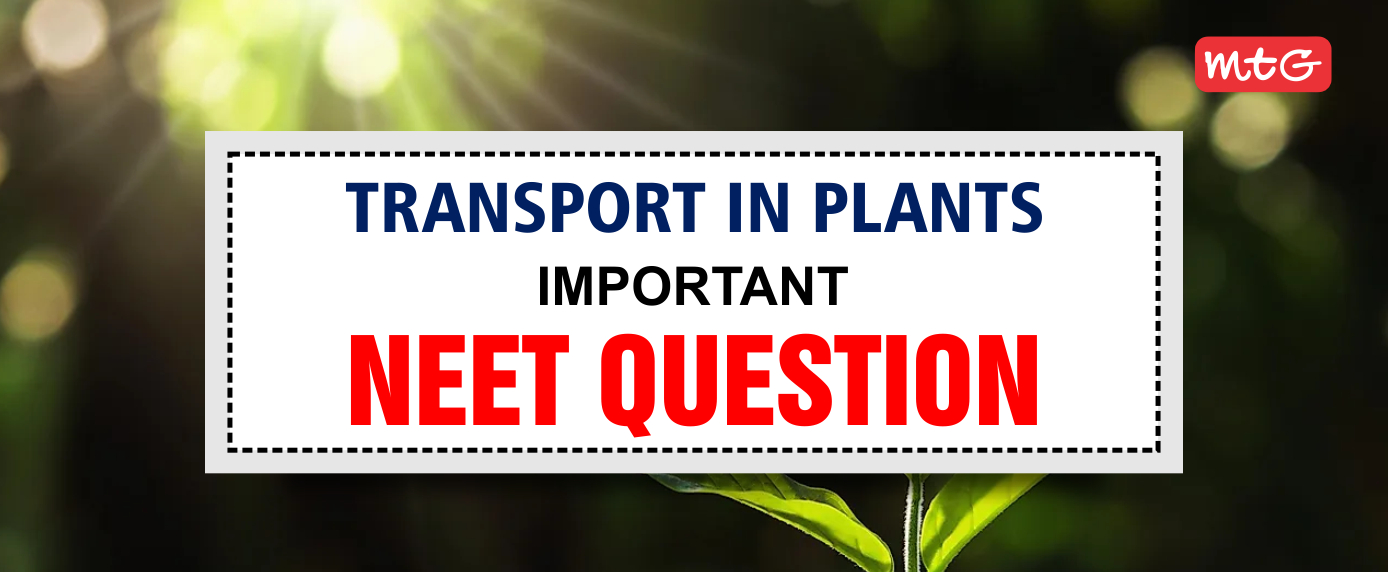
Many important questions are formed in competitive exams like NEET and boards from Class 11 Biology Chapter 11. Transport in Plants is the eleventh chapter in the Class 11 NEET syllabus for Biology. Below, we have provided Important Questions from Class 11 Biology Chapter 11 Transport in Plants for your NEET 2023 preparation. You can check it here for revision purposes.
Latest: Biomolecules NEET Questions and Answers
Transport in Plants Class 11 NEET Questions and Answers
We’ve compiled a list of essential questions about the Transport in Plants biology class 11 chapter 11 that you should not miss while studying for your NEET Exams.
Transport in Plants MCQ for NEET
A semipermeable membrane allows entry of
Select the incorrect statement for the given figure.

Water potential is equal to
Read the following statements and select the incorrect one
Which of the following is not a function of turgor pressure?
Which of the following causes guttation in plants?
Read the following statements and select the correct one
Suman kept some freshly cut flowers in a solution of coloured dye. After sometime she observed the coloured dye rising up in the flower. When the stem of the flower is held up in light, coloured strands are visible. Identify the components of xylem which is conducting coloured dye up the stem
Transport in Plants Match the Following Questions for NEET
Match column I with column II.
| Column I | Column II |
|---|---|
| A. Guttation | (i) Matric potential |
| B. Guard cells | (ii) Intercellular spaces |
| C. Imbibition pressure | (iii) Cytoplasmic streaming |
| D. Apoplast pathway | (iv) Hydathodes |
| E. Symplast pathway | (v) Subsidiary cells |
A. A-(iv); B-(v); C-(i); D-(ii); E-(iii)
Transport in Plants Assertion and Reason Questions for NEET
In each of the following questions, a statement of Assertion (A) is given and a corresponding statement of Reason (R) is given just below it. Of the statements, pick the correct answer as :
Assertion : Stomata are often called turgor operated valves. Reason : The opening and closing of stomata are caused by gain and loss of turgidity by their guard cells.
Assertion : Turgor pressure is essential for cell enlargement during growth. Reason : Turgor pressure generates the stress that leads to the expansion of plant cell wall during growth.
Assertion : Sucrose is the most suitable form of carbohydrate translocation. Reason : Sucrose is non-reducing and chemically stable that does not react with other substances during translocation.
Assertion : Diffusion is more rapid when the difference of concentration is larger. Reason : Diffusion occurs in all directions through the available space
Assertion : Plasmolysis is involves shrinkage of protoplast from the cell wall. Reason : Plasmolysis is a result of endosmosis
Assertion : Apoplast pathway is the rapid means of movement of water through cells. Reason : Apoplast pathway is affected by the metabolic state of root cells.
Assertion : Aquaporins are membrane proteins for active transport of water soluble substances. Reason : Aquaporins transport substances along the concentration gradient.
Assertion : The concentration of minerals in the soil is usually lower than the concentration of minerals in the root. Reason : Most minerals enter the root by active absorption into the cytoplasm of its epidermal cells.
Assertion : Semipermeable membrane allows passage of some selected solutes to a limited extent only. Reason : Semipermeable membrane is used in measurement of osmotic potential.
Assertion : Transpiration is lower in the still air. Reason : Water vapours accumulate around the transpiring organs and reduce the DPD of the air.
Transport in Plants Figure-Based Questions for NEET
Consider the given figure of Spirogyra cells in an experiment and answer the following questions.
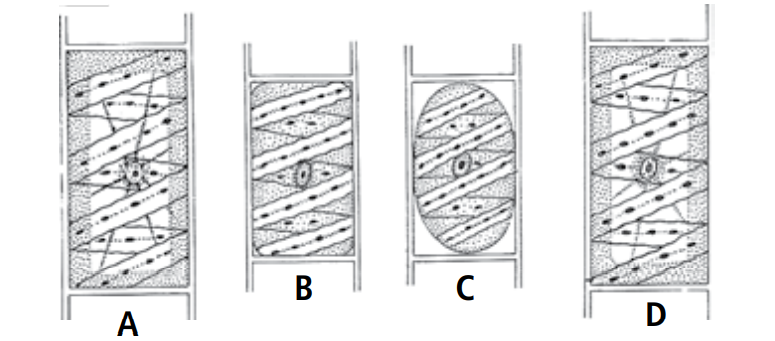
(a) Identify A, B, C and D.
A. The given figures, A, B, C and D represent turgid, incipiently plasmolysed, plasmolysed and deplasmolysed cells, respectively.
(b) Give reasons why protoplast shrinks during plasmolysisand expands during deplasmolysis.
A. Shrinkage of protoplast during plasmolysis occurs due to exosmosis under the influence of hypertonic condition and expansion during deplasmolysis occurs due to endosmosis under the influence of hypotonic condition.
(c) What are the various precautions that should be taken during the above experiment?
A. The precautions are as follows: (i) The experimental material (Spirogyra filament) must be fresh and living. (ii) The external solution must not be too strong as to become toxic. (iii) Wash at least once the experimental material with external solution so that chances of dilution are minimised. (iv) For deplasmolysis, the material has to be washed at least twice with water.
Preparing for NEET? Don’t forget to check Chapterwise Important Questions–
- The Living World NEET Questions and Answers
- Biological Classification NEET Questions and Answers
- Plant Kingdom NEET Questions and Answers
- Animal Kingdom NEET Questions and Answers
- Electrostatics NEET Questions and Answers
- Morphology of Flowering Plants NEET Questions and Answers
- Anatomy of Flowering Plants NEET Questions and Answers
- Structural Organisation in Animals NEET Questions and Answers
- Cell the Unit of Life NEET Questions and Answers
Best & Most Recommended Books for NEET UG 2023 Exam
|
NEET Champion
|
35 Years NEET Chapter-wise Solutions
|

